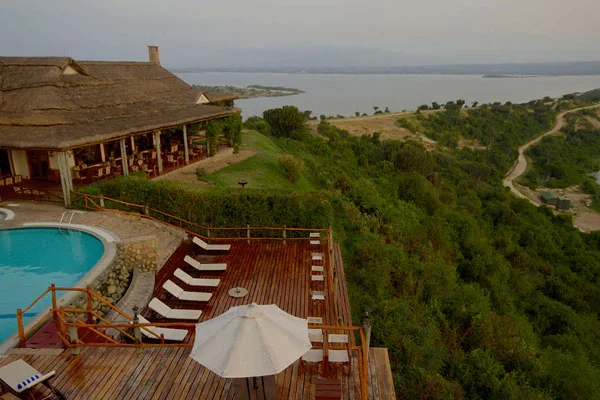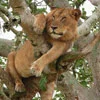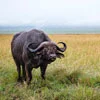Ideal for gorilla and chimpanzee trekking due to the dry and clear conditions, January is one of the best times to visit Uganda’s lush forests.
Wildlife is more visible and active, providing unique opportunities for close encounters. The national parks are less muddy, making trekking conditions favourable.
Continuing dry weather makes February excellent for visiting southern Uganda's national parks, where gorilla trekking conditions are optimal.
The region remains relatively dust-free compared to the hotter, dustier north, enhancing the safari experience.
The onset of the rainy season in March enhances the greenery of Uganda's landscapes, making it a fantastic time for photography and birdwatching.
Newborn wildlife begins to appear, providing delightful sightings amidst the vibrant, lush settings of the Uganda national parks.
April's heavy rains may restrict travel because of frequent showers. However, the lush environment and lower visitor numbers offer peaceful park experiences.
Discounted rates on accommodation and trekking permits are available during this time. Therefore, preparedness for wet weather is advised.
Though still rainy, May experiences fewer downpours. The sustained moisture enriches the flora, resulting in picturesque landscapes.
These settings are perfect for nature lovers seeking tranquillity. Additionally, fewer tourists allow for a more relaxed exploration of the parks.
The dry season begins, bringing excellent wildlife viewing opportunities as animals gather around water sources.
June marks the start of the peak season for luxury safaris, providing superb conditions for gorilla trekking and wildlife safaris in less dense vegetation.
July is prime time for safari enthusiasts with dry weather ensuring clear trails for gorilla trekking and excellent wildlife spotting as animals frequent waterholes.
The pleasant climate enhances the overall safari experience, making it one of the best months to visit.
August's dry conditions create consistent wildlife viewing opportunities, as the sparse vegetation enhances visibility across the savannah.
This environment increases the likelihood of spotting key species like elephants, lions, and elusive leopards.
With clear views and active wildlife, August is highly recommended for comprehensive game drives.
As September marks the end of the dry season, occasional rains start to appear, yet conditions remain superb for safaris.
With fewer tourists around and lower prices, it’s a great time for exploring the outdoors and experiencing Uganda’s diverse wildlife and landscapes in cooler weather.
In October, rains start to refresh the landscapes, but wildlife viewing remains fruitful. Visitor numbers are moderate, allowing for quieter safari experiences.
This month also offers opportunities for discounted gorilla trekking, adding extra appeal for adventurous travellers.
Continual rains in November transform Uganda’s parks into lush, green environments, perfect for birdwatching and enjoying the vibrant natural settings.
Despite the rain, fewer tourists make it possible to have more personal and intimate wildlife encounters.
December sees a decrease in rainfall, improving conditions for wildlife spotting, particularly for birds as migratory species make their way to the region.
The better weather also draws more visitors, making it a festive and vibrant time to experience Uganda’s natural beauty.

























